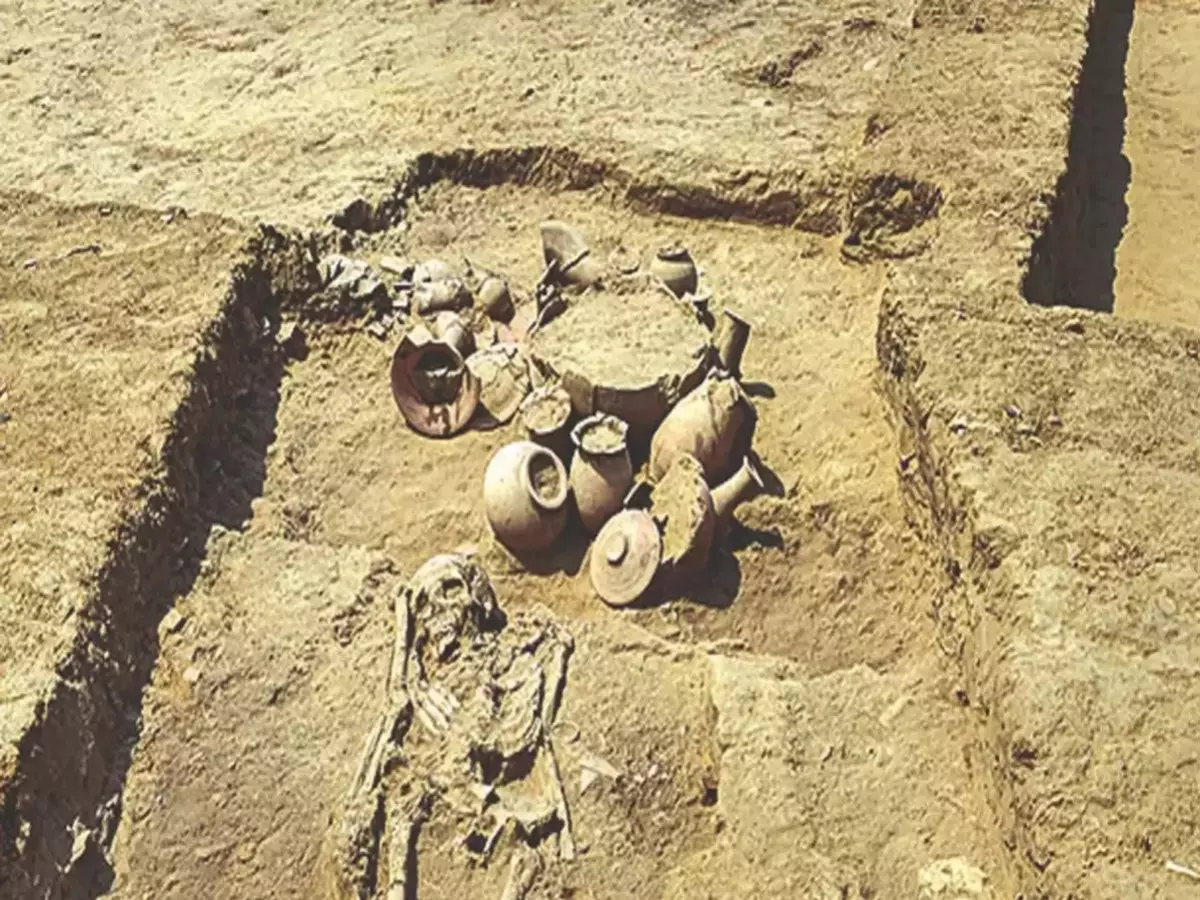Explained: How Discoveries At Rakhigarhi Shape Our Understanding Of Indus Valley Civilisation
History is dynamic, contrary to popular belief. When new evidence is found, our perception of it is frequently altered. The recent excavations by the Indian Archeological Survey at a 5000-year-old Indus Valley civilization site attest to this truth.

History is dynamic, contrary to popular belief. When new evidence is found, our perception of it is frequently altered. The recent excavations by the Indian Archeological Survey at a 5000-year-old Indus Valley civilization site attest to this truth. It is Rakhigarhi.
RakhiGarhi is a village in Haryana¡¯s Hisar district and is the oldest archaeological site in India, broadly sprawling across 350 hectares. It is also one of the five most prominent sites of the Indus Valley Civilization, the others being Harappa, Mohenjodaro, Dholavira, and Ganeriwala.
 ANI
ANI
Starting in 1998, there have been three rounds of archaeological excavations at this site. Firstly, ASI carried out excavations at this site from 1998 to 2001. The second round of excavations was conducted by Deccan College, Pune, from 2013¨C2016.
ASI and the Haryana government collaborated on recent excavations at the site. Intending to commemorate the heritage associated with the site, the latter intends to develop an on-site museum there.
What are the findings of the recent excavation?
The archaeological findings of the recent excavation establish RakhiGarhi not only as a well planned city of antiquity but also as the largest of all Harappan sites till date¡ªmuch larger than what was thought to be the largest, Mohenjodaro.
So far, seven mounds have been excavated in Rakhigarhi, each of which has revealed a range of artefacts. The joint director general of ASI states that "the objective is also to understand the settlement of Rakhigarhi and to identify the individuality and interrelationship of the seven mounds."
 ANI
ANI
What are the recent findings under discussion? There has been vivid evidence of multi-storeyed houses, well planned out lanes, an efficient drainage system, a kitchen complex, thousands of clay pots and terracotta figures, semi-precious stones and, lastly, what scholars believe to be a jewellery making unit.
If what is speculated as the jewellery making unit is indeed a jewellery making unit, one can conclude with considerable certainty that this settlement was also a commercial trading centre in the ancient world.
The significance of the recent finds
Traditionally, the fairly unchallenged thesis of historians has been that the Indus Valley civilization originated in the Sindh region of Pakistan. In light of recent evidence, some experts believe that this thesis can be rethought. For example, Dr. Vasant Shinde, the Harappan civilisation expert who conducted the excavations at Rakhigarhi, had theorised that recent discoveries could turn this thinking on its head, suggesting that the Harappan civilisation was actually born in Haryana's Ghaggar Basin.
 TOI
TOI
This supposed alternative origin theory is in consonance with an ASI finding from 2015, which revealed that the Bhirana village excavation site in Haryana is in fact the oldest settlement of Harappan civilization. In a very significant way, then, the recent excavations potentially act as an aid to subverting traditional historical knowledge.
The findings from the excavations also furnish us with novel data. When the skeletal remains of two females discovered recently at the site are studied scientifically, they shed light on the ancient dietary practices. Data such as this will be profoundly useful for a historian who continually constructs our past.
Recognition by the Indian Government
All in all, the purpose of these excavations for ASI is evident¡ª"to make the archaeological site of Rakhigarhi accessible to people by exposing the structural remains and conserving them for future viewing, along with providing amenities to the visitors."
In her 2020 Budget speech, proposing to facilitate cultural development, Finance Minister Nirmala Sitharaman named Rakhigarhi as one of five ancient sites that the Indian government will develop as iconic archaeological attractions. Hastinapur (UP), Dholavira (Gujarat), Shivsagar (Assam), and Aadichanallur were the other four sites mentioned in the speech (Tamil Nadu).
References
ASI's excavation at Harappan site of Rakhigarhi reveals drainage system, copper and gold jewellery. (2022, May 8). The Indian Express. Retrieved May 12, 2022, from Indian Express
Jha, A. (2022, May 11). Explained: Recent finds at Rakhigarhi excavation, their significance. News9live. Retrieved May 12, 2022, from news9live
Recent Excavations In Haryana's Rakhigarhi Throw New Light On Indus Valley Civilisation. (2022, May 10). Outlook India. Retrieved May 12, 2022, from outlookindia